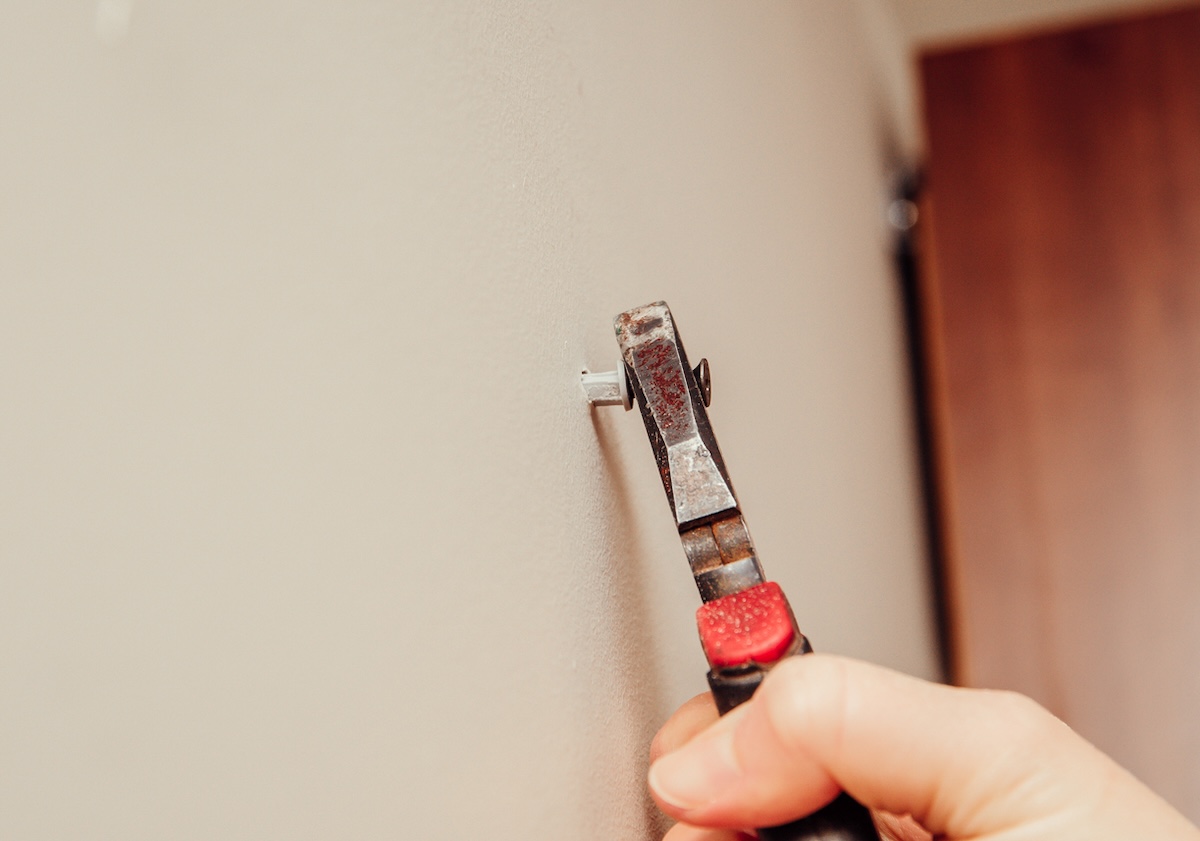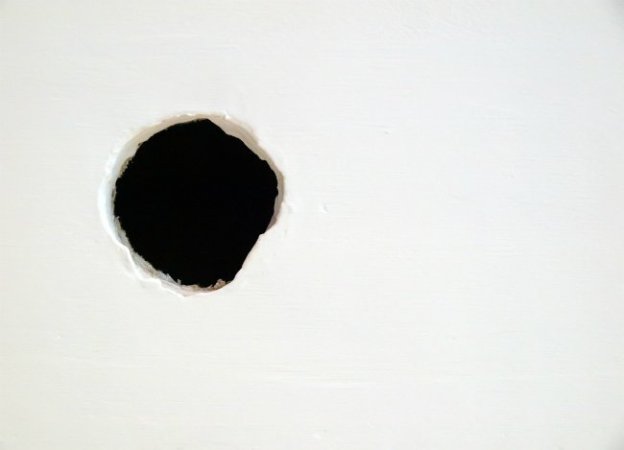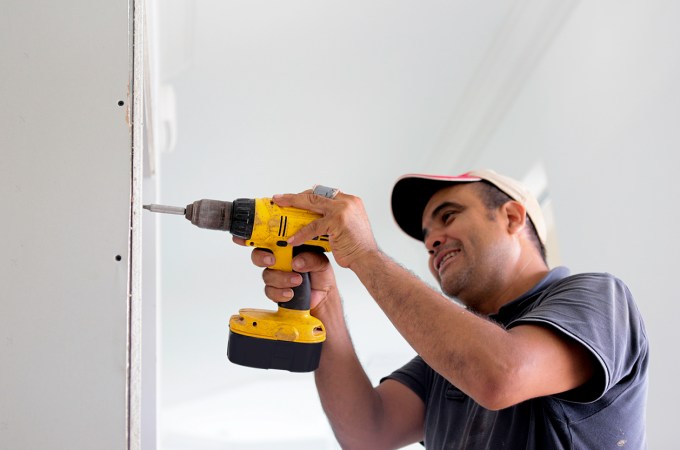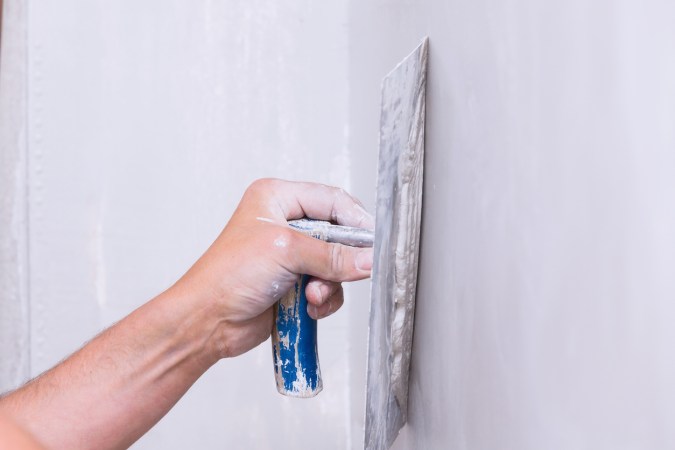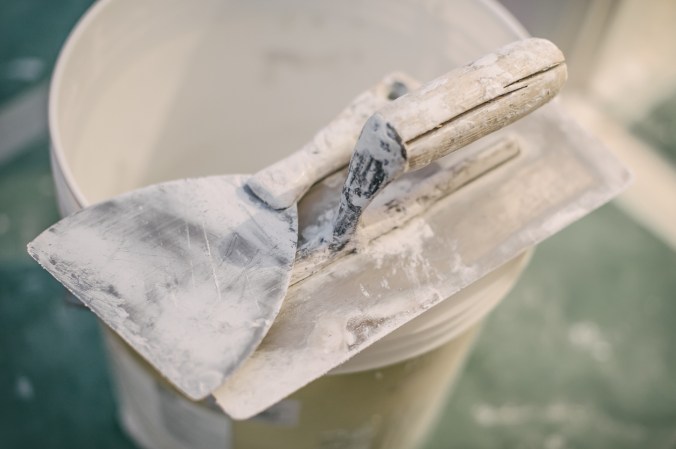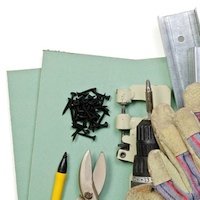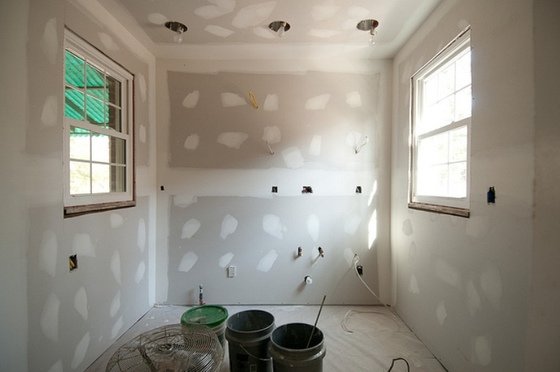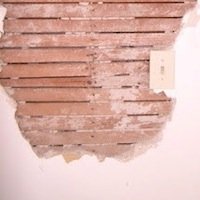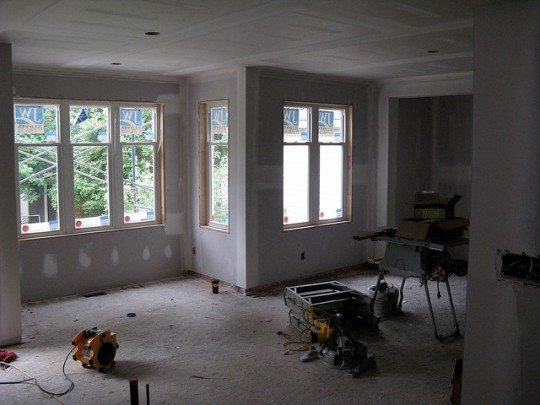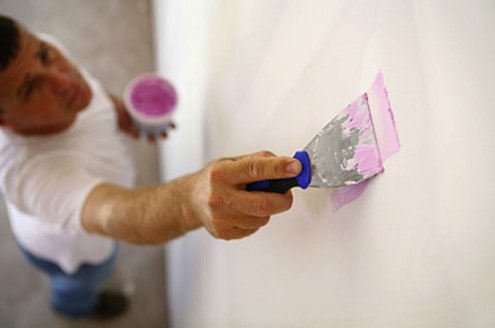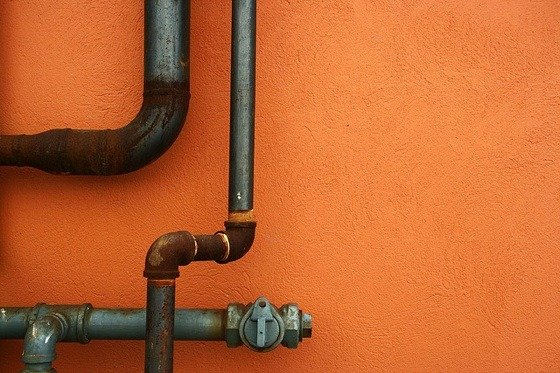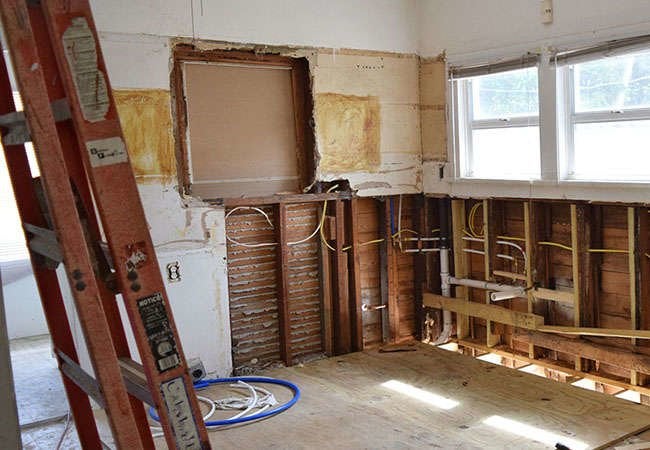We may earn revenue from the products available on this page and participate in affiliate programs. Learn More ›
Drywall anchors certainly come in handy when you want to safely hang something heavy on a spot on a wall that doesn’t line up with the wall studs. You simply drill a hole to insert an anchor, and its firm grip on the drywall enables you to hang shelves, a large mirror, or heavy artwork. However, it’s that same reliable grip that makes it tough to remove a wall anchor from the wall when you want to relocate that large mirror or an enormous family portrait.
Here’s how to remove wall anchors and how to patch the hole that they leave behind in the drywall.
Before You Begin
There’s a universal method for dealing with any type of drywall anchor that we’ve learned from union drywallers: Bury it in the wall. But before you can do that, you first need to identify the type of drywall anchor, remove any screws to access the anchor, and then proceed with a method best suited to the particular type of anchor.
Threaded plastic, self-drilling toggle, or expanding anchors can sometimes be pulled out, while other varieties like molly bolts, toggle bolts, winged anchors, and strap toggle anchors may need to be pushed through the wall.
How to Remove Drywall Anchors
While some types of drywall anchors can be removed, not all can be easily pulled out. Here are a few types of anchors and some effective methods outlining how to get anchors out of drywall. If you aren’t sure which type of drywall anchor you have or if it’s not cooperating with the removal method, then move on and follow the steps for how to push a drywall anchor through the wall, below.
Expansion drywall anchors
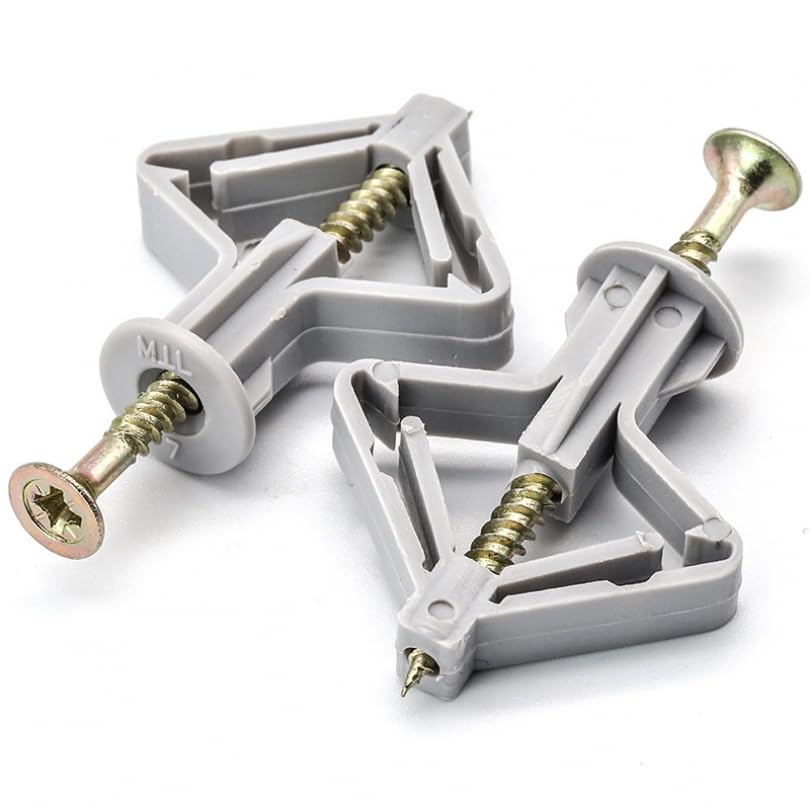
Use the screw that’s been inserted into the expansion drywall anchor to help ease the plastic anchor out of the drywall.
- Ease the screw out of the plastic anchor about ¼ inch.
- Grip the exposed screw shaft with needle-nose pliers.
- Gently pull the screw and anchor out of the drywall.
- If there is tremendous resistance, back out the screw entirely and move on to pushing the anchor through the wall.
Threaded drywall anchors
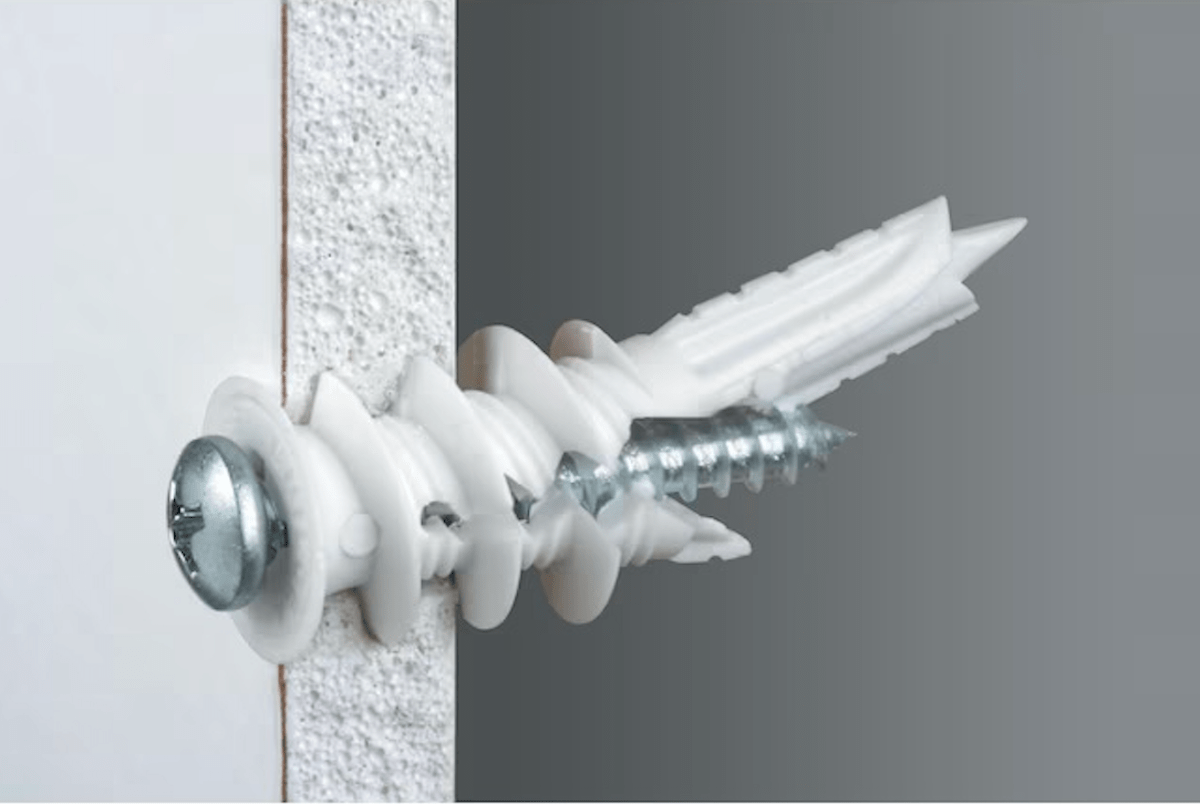
With a sharp tip and threads, threaded drywall anchors are similar to screws.
- Insert the appropriate screwdriver into the head.
- Turn the screw counterclockwise slowly to ease it out of the wall.
- If there is resistance, remove the metal fastener and move on to pushing the anchor through the wall.
Self-drilling toggle drywall anchors
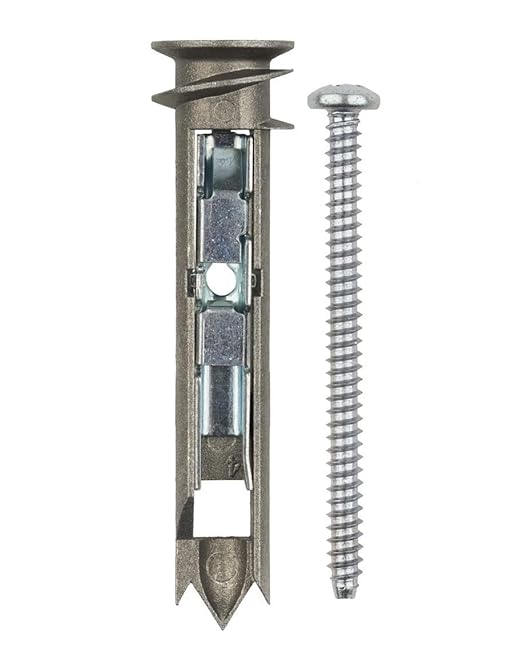
A heavy-duty option that can be removed, self-drilling toggle drywall anchors have a toggle bar behind the drywall that expands when installed and needs to be closed in order to fit through the opening.
- Insert the screwdriver into the head.
- Turn the screw counterclockwise to loosen the screw and allow the internal toggle bar to drop.
- Pull the fastener through the opening.
- If you can’t pull the fastener easily through the opening, you may need to push it through the drywall (see the how-to below).
How to Push a Drywall Anchor Through the Wall
Perhaps the simplest way to deal with unwanted drywall anchors, or drywall anchors that are too brittle or damaged to remove, is to recess them into the wall rather than remove them altogether.
- Remove any metal fasteners that are inserted into the drywall anchor.
- Gently tap the head of the anchor with a ball-peen (or tack) hammer. (Do not use a regular hammer, as it can cause more damage to the wall.) Note: If you don’t have a ball-peen hammer, use a screwdriver that’s larger than the head of the anchor. Just place it on top of the anchor, and strike the screwdriver with a hammer.
- Rub your hand across the surface, making sure that the entire head is below the surrounding drywall surface. If not, tap the anchor again.
- After the anchor is recessed into the surface, move on to repairing the drywall.
How to Cut Drywall Anchors Out of the Wall
If you’ve tried the methods above for how to remove metal drywall anchors, how to remove drywall anchors with wings, and how to remove plastic drywall anchors, and the anchor is still in the wall, cutting it out of the wall is a practical, universal solution. Doing this can result in more drywall damage that will need to be repaired, but it is a reliable way of removing drywall anchors. And, it’s the same method used to create an opening for an electrical box in drywall.
- Score the drywall around the anchor head with a utility knife.
- Follow the score line with a keyhole (jab) saw.
- Clean up the edges of the hole and wipe away any dust.
- Patch the hole with joint compound or spackle, sand smooth, and then paint to match the rest of the wall.
How to Patch Drywall Holes
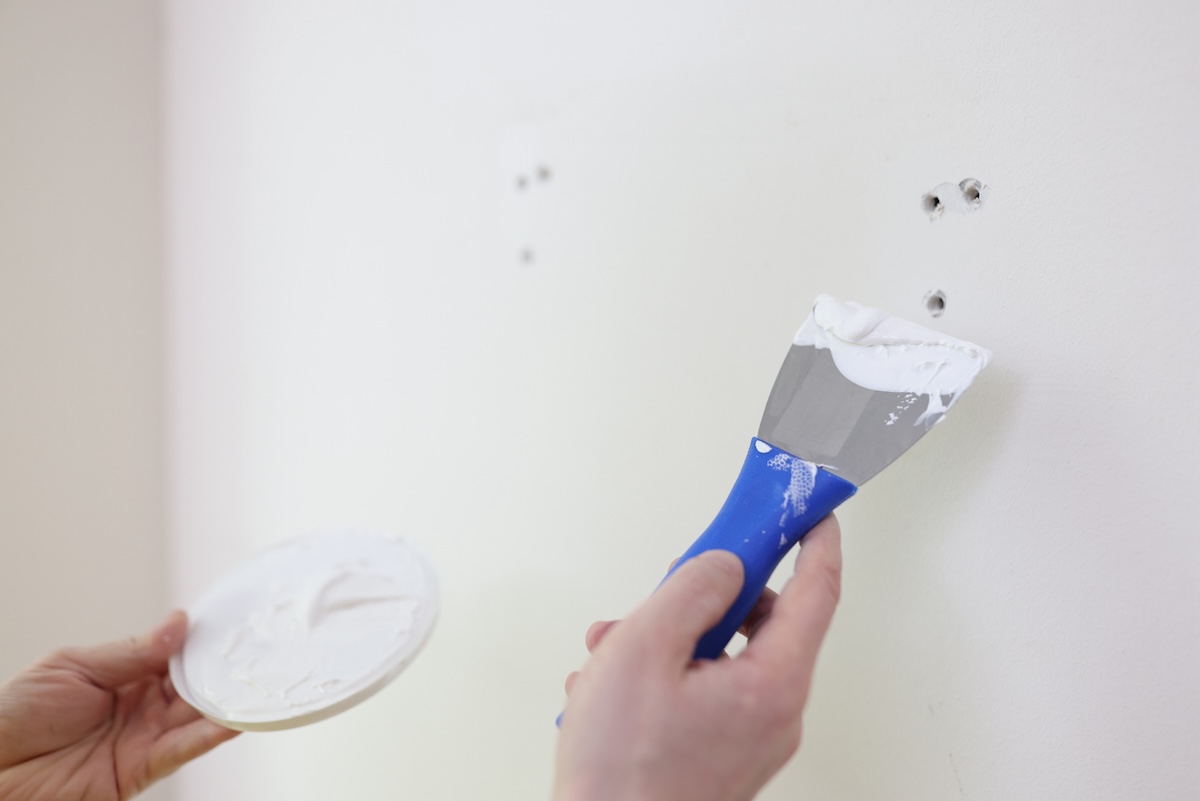
After you’ve successfully figured out how to remove drywall anchors or chosen to recess the smattering of fasteners out of sight, patch the remaining holes with spackle or drywall compound.
- Clean up the hole by tapping a hammer lightly around the edges until they are flat, using a utility knife to cut off any proud edges, or sanding the opening so it’s flush.
- Wipe the wall free of drywall dust with a dry rag.
- Use a putty knife to apply enough drywall compound (or spackle) to fill the hole. Do an “X” motion over the repair spot with the knife to get the putty flush with the wall while removing excess. Let dry overnight.
- Sand the dried putty with the medium-grit side of the sanding sponge, and then move on to the fine-grit side.
- Wipe off dust with a dry cloth.
- If the wall isn’t smooth, apply another coat of compound. If the wall is smooth, touch up with paint.
About the Author
Theresa Clement is a handy designer who has been improving homes for more than 20 years. As a mom and remodeler, she has worked with drywall anchors and repaired both intentional and accidental drywall holes. Starting with her work at architecture firms, she has authored DIY books and worked as a design producer on makeover shows. She now works with her carpenter husband on private homes and their home improvement brand, MyFixitUpLife.

